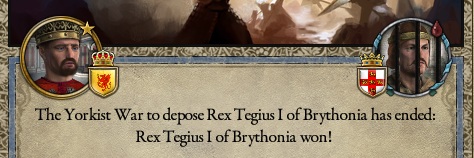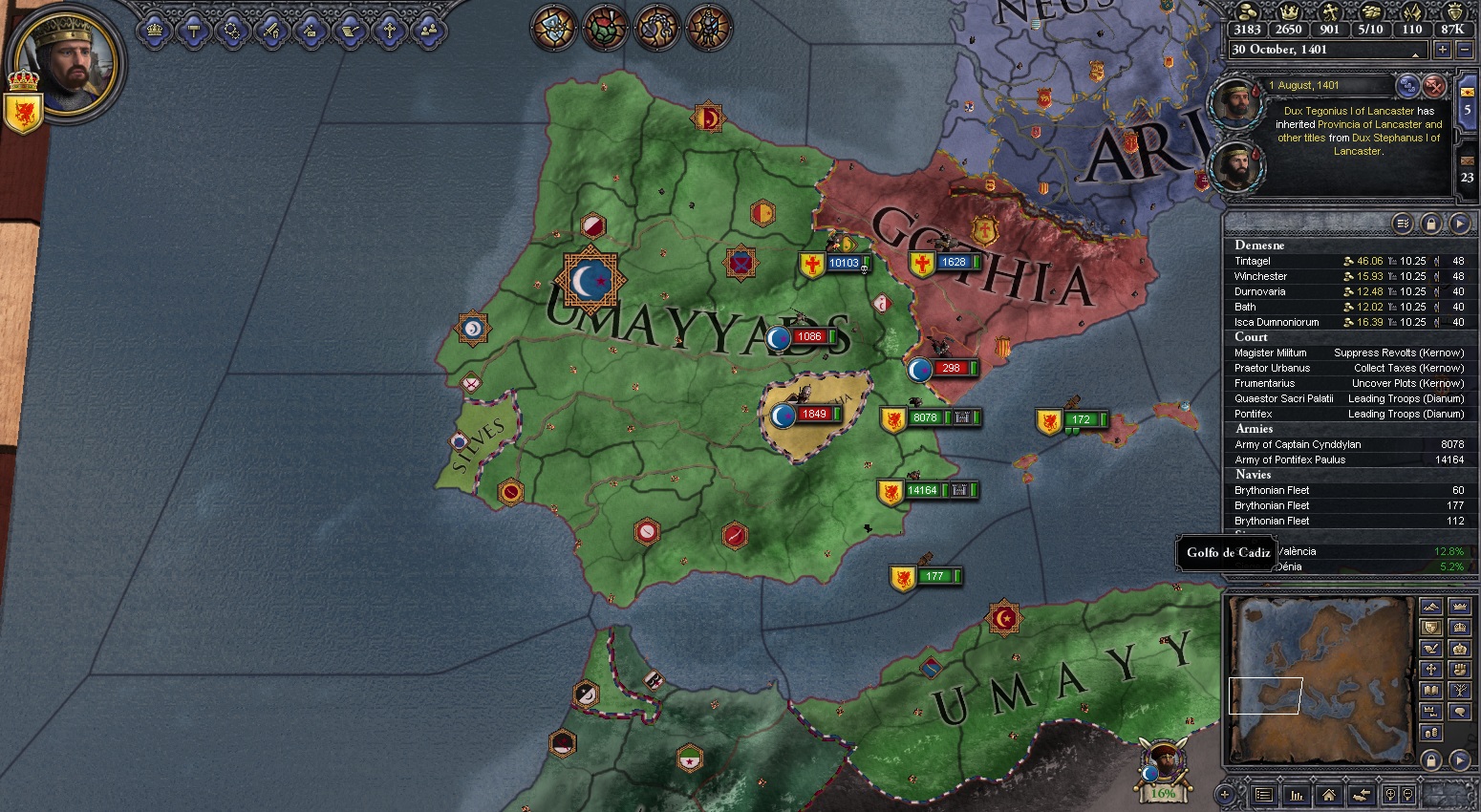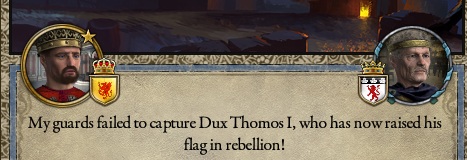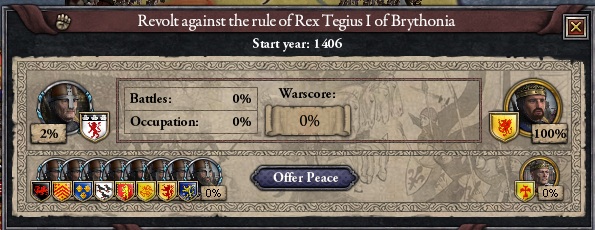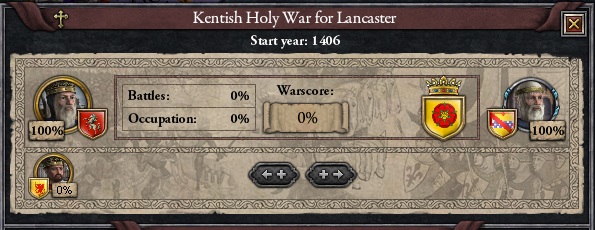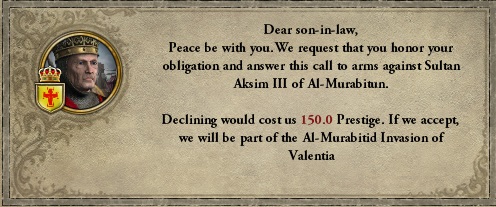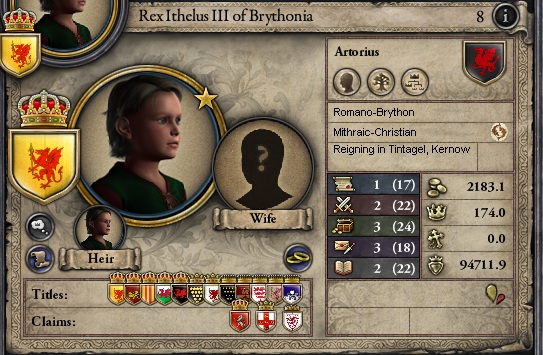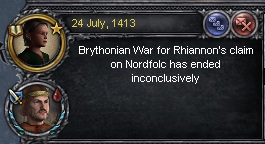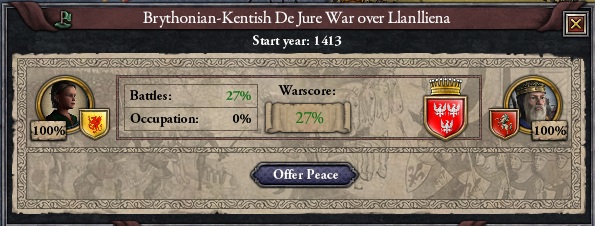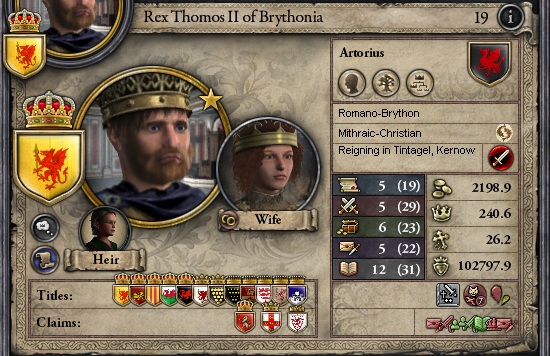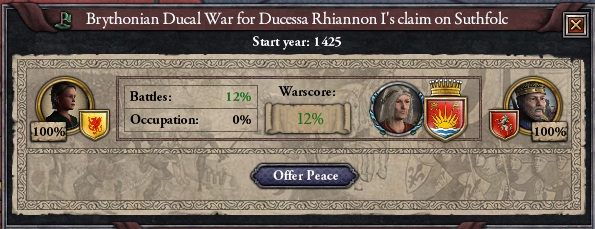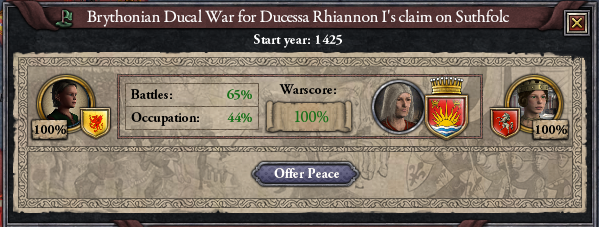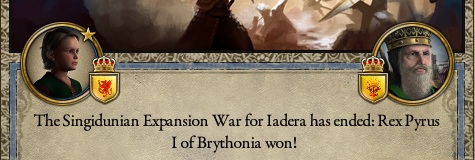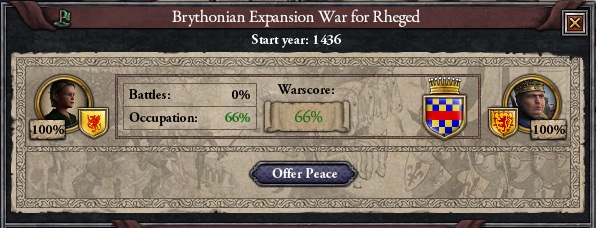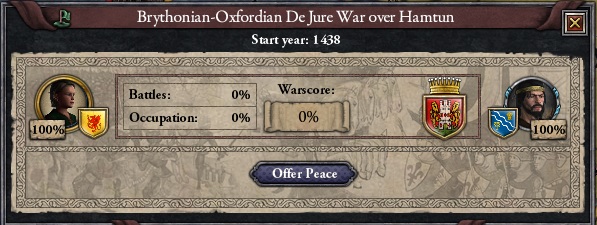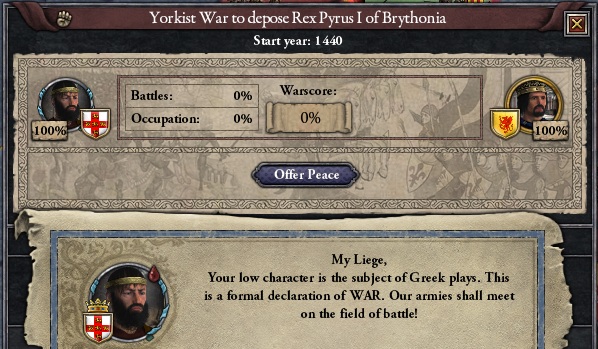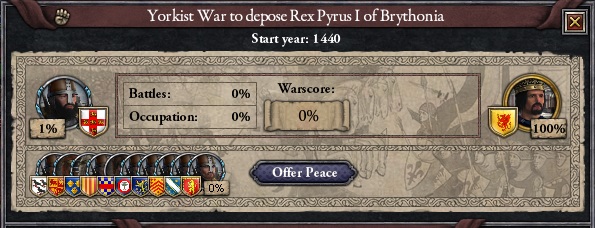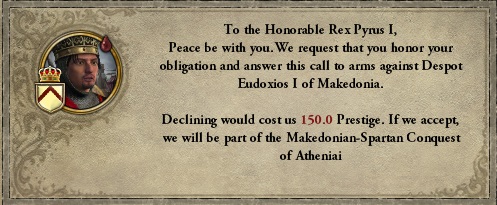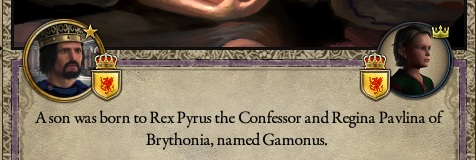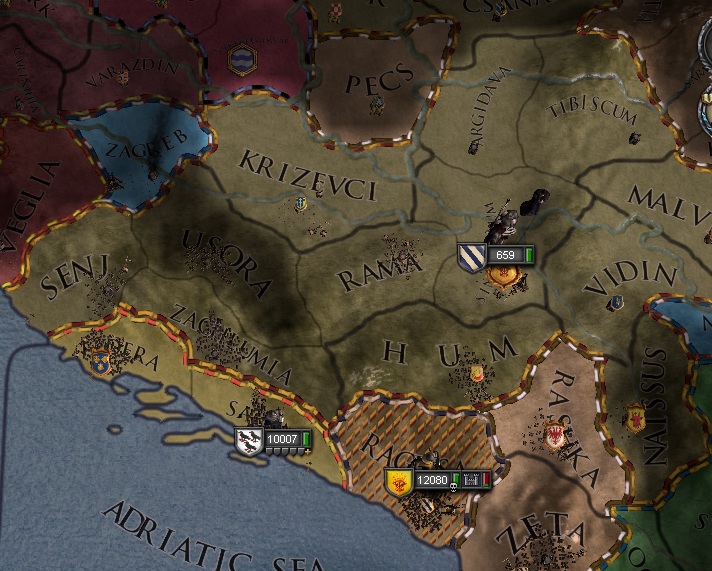King Tegius' reign started quietly, as his regent distributed counties and duchies which King Ithelus the Brilliant had accumulated to mollify restive vassals, leaving Tegius with direct control of the ancient core of Cornovia/Brythonia, to wit, the duchies of Dumnonia and Somerset, and all constituent counties.
This peace would be shattered in the autumn of 1394, when King Cadogus of Kent started a holy war for Northumberland against the Alban realm, and invited Brythonia to join in. Brythonia joined this war, eager to weaken their northern cousins (for the kings of Alba, like Brythonia, boasted of descent from Lucius Artorius, who had been appointed Supreme Military Commander of Britannia in the year 212 by Roman emperor Alexandros III, and whose descendants had been influential in Britannian politics ever since. However the Albans traced their descent through the Welsh branch of the family, which had also spawned the kings of Cambria, who had become the kings of Neustria after Cambria's incorporation into Brythonia.)
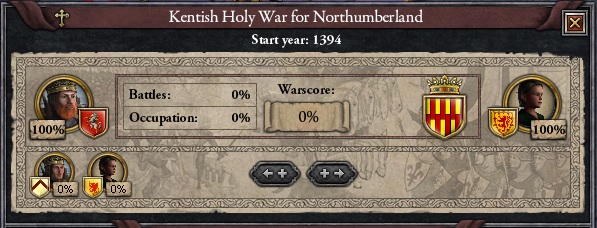
No sooner had this war been brought to a successful conclusion on Dec. 13, 1396, than a call to arms from Sparta, once more menaced by a holy war waged by the Tulunids, arrived. King Tegius' regent accepted on his behalf on New Years Day, 1397, as also did King Cadogus of Kent, but war plans were interrupted when on Januray 7, the ambitious Duke of York, not wanting his men and fortune to be frittered away in yet another war on behalf of a foreign monarch, announced his intention to depose King Tegius even as the Brythonian levies, returning from Northumberland for muster out, marched south toward his home county of Ligeraceaster. The Duke of York was joined in his revolt by the Dukes of Kent, Bedford and Lancaster.

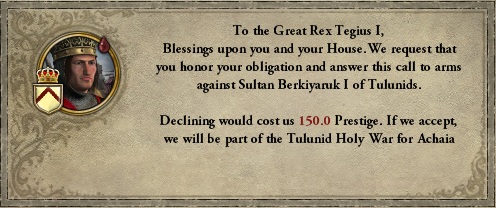

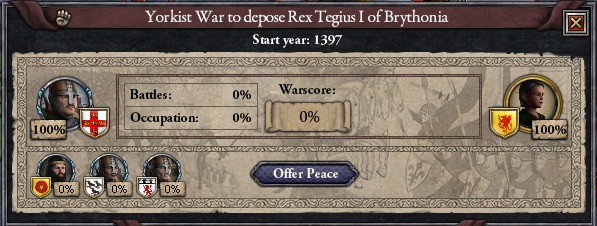
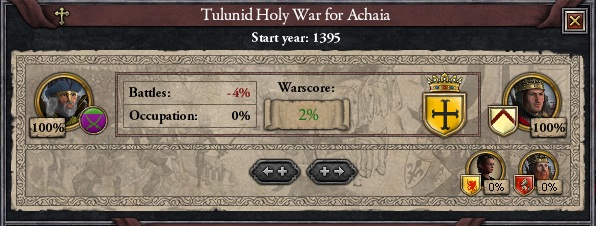
With both wars still raging, King Tegius came of age on June 29, 1399, and started shopping around for a queen to share his throne. After considering and rejecting Spartan and Lombardian princesses, Tegius finally settled on Petiliana Severan, youngest daughter of King Lucas the Pious of Gothia. As dowry, King Lucas sent a call to arms for assistance against the Umayyads, who once more were attempting to conquer Saguntum.
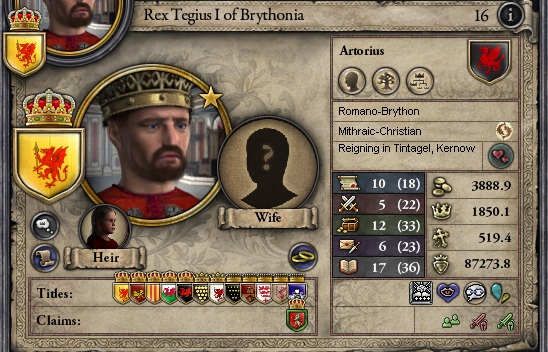
Tegius didn't turn out too bad. Nowhere near as good as his genius father, of course.
Let's hope he lives longer than average for a Brythonian monarch.
This peace would be shattered in the autumn of 1394, when King Cadogus of Kent started a holy war for Northumberland against the Alban realm, and invited Brythonia to join in. Brythonia joined this war, eager to weaken their northern cousins (for the kings of Alba, like Brythonia, boasted of descent from Lucius Artorius, who had been appointed Supreme Military Commander of Britannia in the year 212 by Roman emperor Alexandros III, and whose descendants had been influential in Britannian politics ever since. However the Albans traced their descent through the Welsh branch of the family, which had also spawned the kings of Cambria, who had become the kings of Neustria after Cambria's incorporation into Brythonia.)

No sooner had this war been brought to a successful conclusion on Dec. 13, 1396, than a call to arms from Sparta, once more menaced by a holy war waged by the Tulunids, arrived. King Tegius' regent accepted on his behalf on New Years Day, 1397, as also did King Cadogus of Kent, but war plans were interrupted when on Januray 7, the ambitious Duke of York, not wanting his men and fortune to be frittered away in yet another war on behalf of a foreign monarch, announced his intention to depose King Tegius even as the Brythonian levies, returning from Northumberland for muster out, marched south toward his home county of Ligeraceaster. The Duke of York was joined in his revolt by the Dukes of Kent, Bedford and Lancaster.





With both wars still raging, King Tegius came of age on June 29, 1399, and started shopping around for a queen to share his throne. After considering and rejecting Spartan and Lombardian princesses, Tegius finally settled on Petiliana Severan, youngest daughter of King Lucas the Pious of Gothia. As dowry, King Lucas sent a call to arms for assistance against the Umayyads, who once more were attempting to conquer Saguntum.

Tegius didn't turn out too bad. Nowhere near as good as his genius father, of course.
Let's hope he lives longer than average for a Brythonian monarch.




